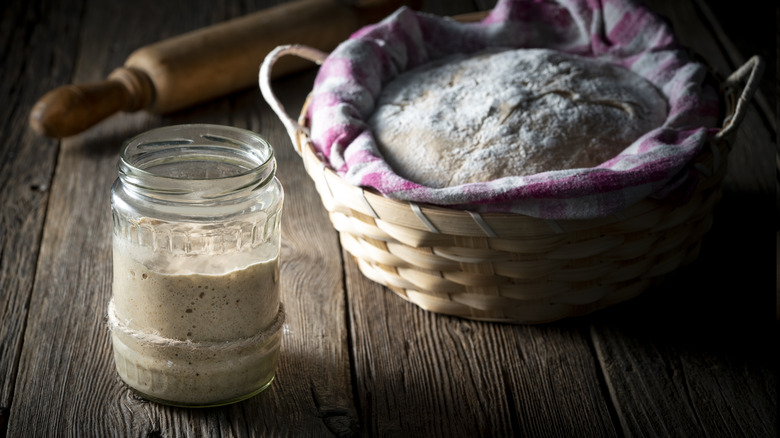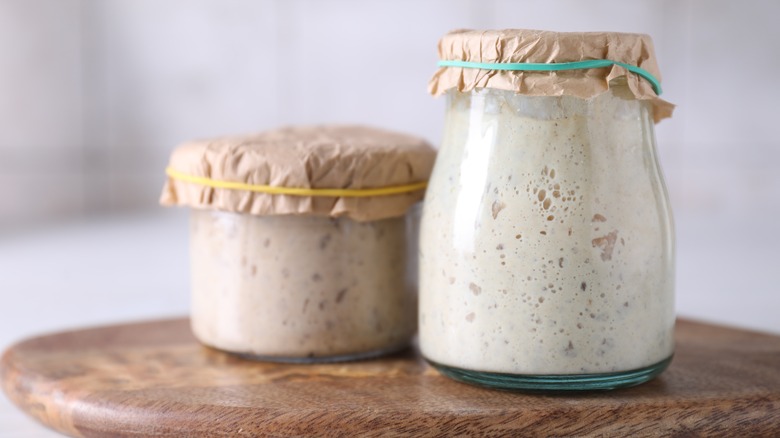Red Flags That Indicate Your Sourdough Starter Has Gone Bad
A sourdough starter is an absolute necessity for baking sourdough bread. In addition to providing the signature tangy flavor, it's the starter — not yeast — that makes the bread rise. You can make your own, get some from a friend, or buy it. Of course, once you have a starter, it requires maintenance in order to keep it alive, bubbly, and delightfully sour through regular discarding and feeding. But despite your best efforts, there are times when a sourdough starter can go bad and is no longer safe to use. Luckily, there are some big red flags to look (and smell) for that can let you know the starter is not salvageable.
While hooch is perfectly safe, mold is not. Orange, pink, blue, or green spots — potentially fuzzy — are the biggest indictor that mold has begun to grow in the starter. There is no coming back from mold. Whether you see mold on the sides of the container or on the starter itself, the entire batch should be tossed. Smell is another indicator, but since a healthy starter can be pungent and range from vinegar to acetone, it's not as reliable as the visual cues. Still, if you aren't sure if that spot is pink or light brown, but the starter has moved away from sharp or sour smells to just smelling off or unpleasant, err on the side of caution and throw it away. You can always start over from scratch or hit up a friend for a little more.
These colors and aromas mean it's time to toss your starter
Sourdough starter is just flour and water so its natural color will range from tan to brown if it's fed with a darker flour like rye or whole wheat. Sometimes, if it's been too long between feedings, there will be a layer of liquid on top of the starter that will start out clear and darken over time, even becoming black. That does not mean it should be tossed, but it does mean that your starter needs attention. The liquid is called hooch, an alcohol produced by the fermentation of the starter. Grey, black, or brown are all acceptable colors.
Though people fret about whether to keep sourdough starter on the counter or in the refrigerator (they're both fine), how often they should feed it, and how to store the discard, it's all actually very straightforward and hard to kill a starter. If a starter is just neglected, a few vigorous feeds can bring it back to life. In fact, forgetting it's stored in the oven, accidentally baking it, and then having to trash it due to broken glass or melted plastic is much more likely than killing it.

